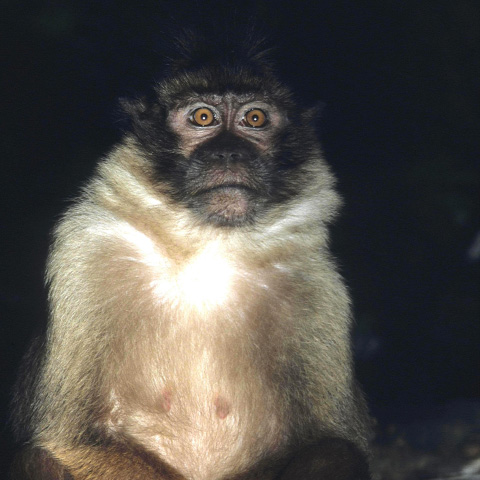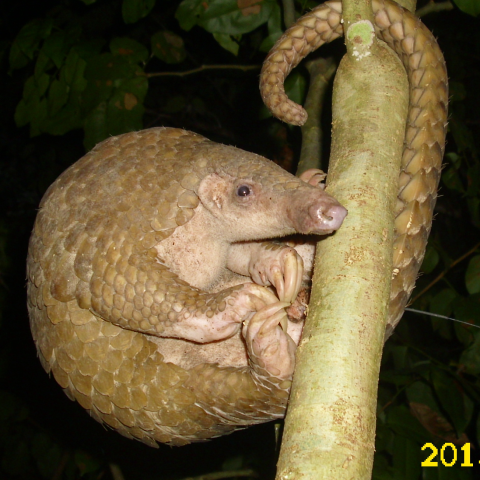Conservation Actions
This species is listed on Appendix II of CITES. The area from which the single specimen was collected has been declared a reserve (Flannery and Groves 1998). There is a need to enforce the protection of this area and conduct additional surveys in suitable habitat for remaining populations on Berg Rara. Further research is needed into the natural history of the species and into conservation measures to protect it.Location Information
This species is known from one specimen collected in 1961 at 1,600 m a.s.l., from a single mountain of Berg Rara in the Cyclops Mountains in extreme northern Papua Province, Indonesia. It has not been located, and is stated by landowners to be absent, in the adjacent mountain ranges of Torricelli and Bewani Ranges to the east. A formerly more extensive range is suggested by late Pleistocene fossil records of a small-bodied Zaglossus from the Oenake Range, a coastal outlier of the Bewani range (K. Aplin pers. comm. 2015). An expedition to the Cyclops Mountains in May 2007 found evidence of echidna activity (recent digging activity and burrows), and there was local knowledge of the species that implied its continued existence there, although no echidna was sighted (Baillie et al. 2009). This expedition concluded that the species may occur at lower elevations than previously thought, from 166 to 1,600 m.Geographic Range
Extant
Indonesia
Population Information
This species has not been recorded since 1961. An expedition to the Cyclops Mountains in May 2007 found evidence of the species (recent digging activity and burrows), and there was local knowledge of the species that implied its continued existence there. It is thought to have been distributed more widely in the late Quaternary. It is a large animal that probably occurred at low density and would not have existed in such a small area naturally.The status of the one recorded population is unknown, but is likely to be decreasing and with limited scope for recovery unless hunting in the Cyclops Range is regulated.
Threats
All long-beaked echidnas Zaglossus are highly susceptible to human predation with the use of trained hunting dogs able to detect and follow the animals to their daytime retreats, even in densely forested habitat. Except with the aid of dogs, long-beaked echidnas are extremely difficult to locate as they occur at naturally low densities and are nocturnal.Habitat degradation and conversion may be significant, but given the ecological breadth displayed by long-beaked echidnas, habitat changes are unlikely to be important as primary threats. However, they probably increase the likelihood of detection and predation, and there is a clear correlation between habitat conversion or degradation and regional extinction of other species of Zaglossus.
Hunting by local people in the Cyclops Range continues to be a major threat. The habitat for this species is also being degraded by logging and by expansion of small-scale agriculture.







